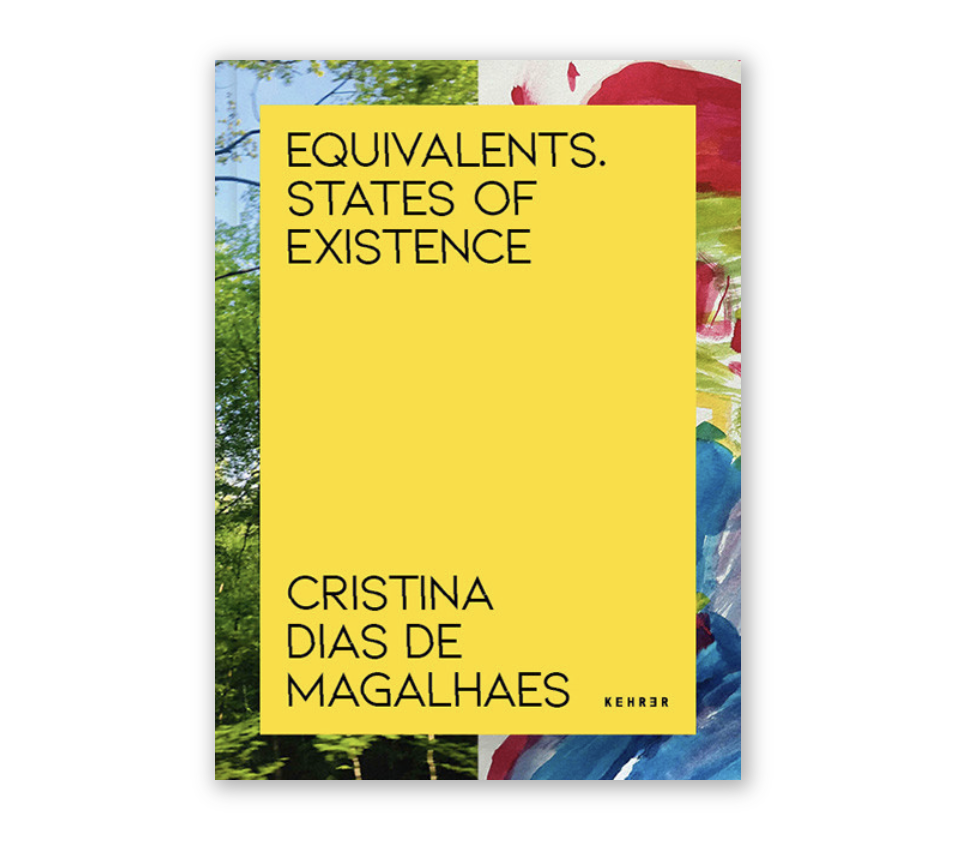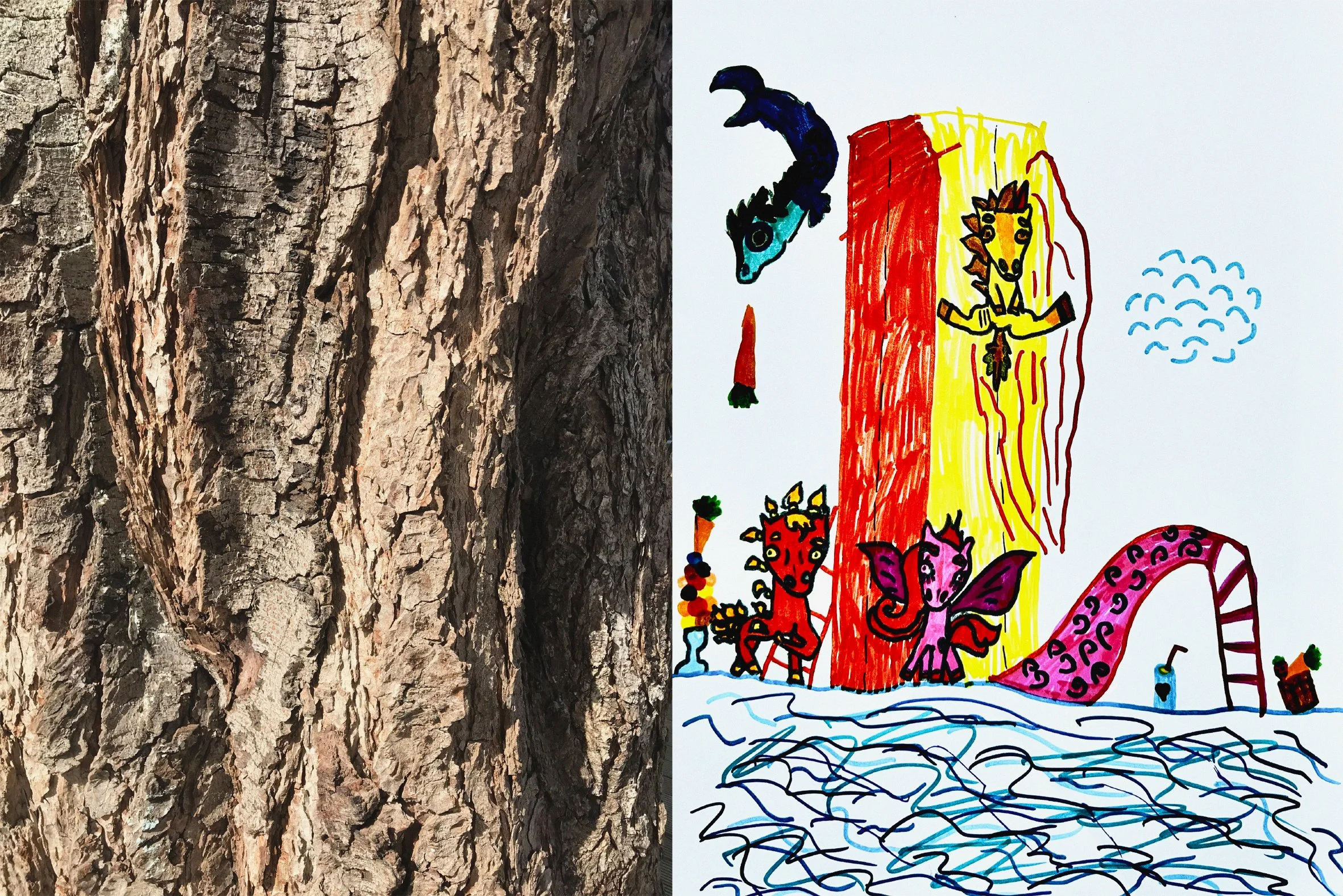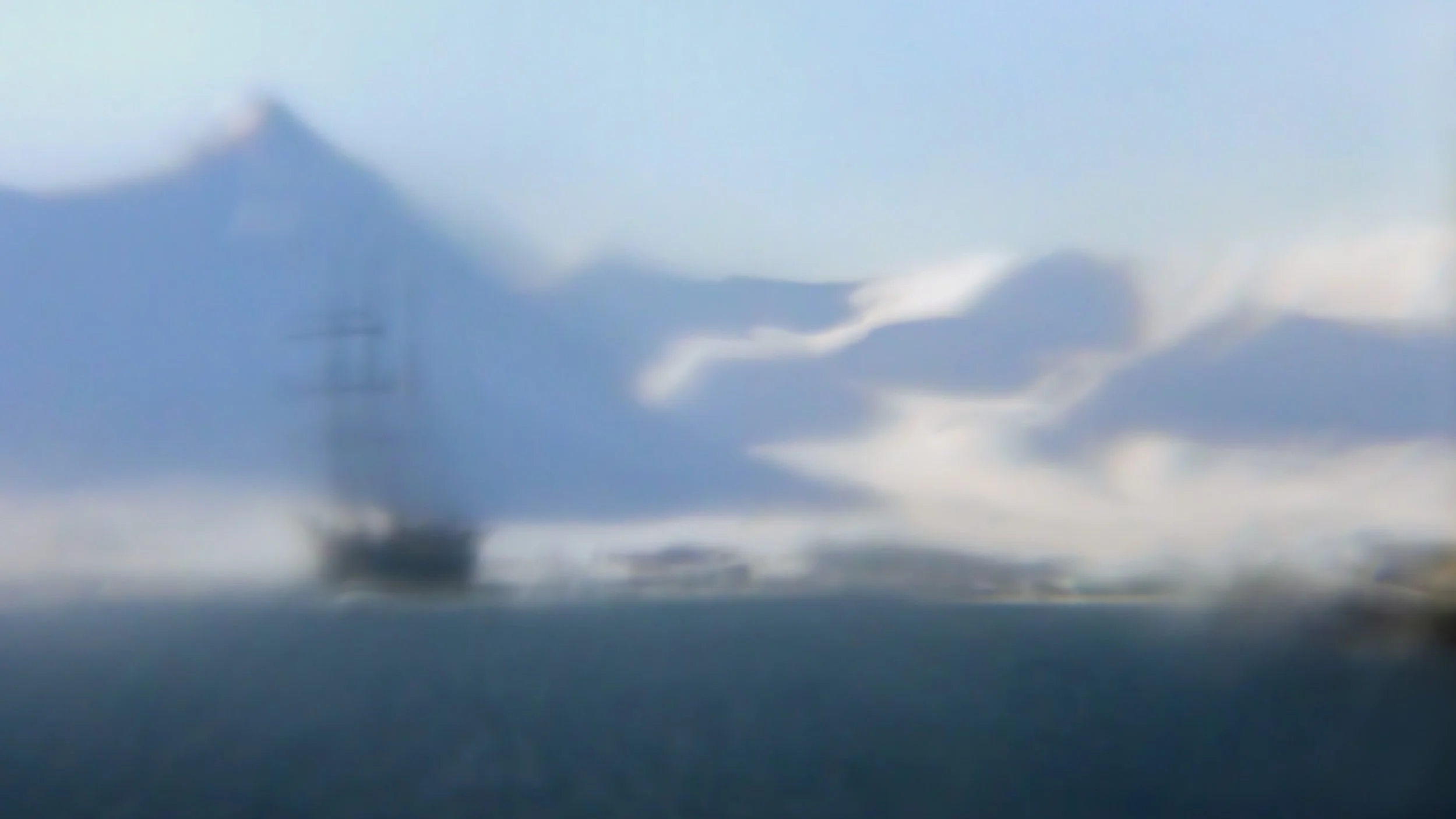This Photobook Lets You Hear the Images — And Rethink What Photography Can Be
Welcome to this edition of [book spotlight]. Today, we uncover the layers of 'Equivalents. States of Existence,' by Cristina Dias de Magalhães (published by Kehrer Verlag). We'd love to read your comments below about these insights and ideas behind the artist's work.
In this photobook, silence speaks louder than any picture.
Cristina Dias de Magalhães stopped taking photos after becoming ill and losing her father. But even when she wasn’t creating, her way of seeing the world didn’t disappear. Later, she returned to photography with new questions, a slower rhythm, and a deeper connection to memory and emotion. This is a photobook shaped by loss, reflection, and a quiet form of resilience.
What if you could hear a photograph instead of seeing it?
That’s the surprising idea behind Equivalents. States of Existence, a book that includes audio transcriptions, children’s drawings, and visual pairings that feel more like poetry than documentation. It was created during a time when Cristina feared she might lose her sight. That fear led her to ask what photography really means. Instead of chasing perfect images, she explored what remains when you let go of control.
She turned illness and loss into a new visual language.
About the Book
Equivalents. States of Existence is Cristina Dias de Magalhães’s second photobook. Created between 2021 and 2024, it is a deeply introspective work shaped by personal loss, illness, and the possibility of losing sight. Combining diptychs, children’s drawings, and audio transcriptions, the book reimagines what photography can be, beyond sight, beyond documentation. Inspired by Alfred Stieglitz’s Equivalents and marked by emotional subtlety, it explores themes of fragility, resilience, and memory. The book includes texts by Paul di Felice, Christian Gattinoni, and Marie-Anne Lorgé, and was shortlisted for the Prix de la Photographie Clervaux Cité de l’Image. (Kehrer Verlag)
Overview of the project: What inspired you to create Equivalents. States of Existence, and how did your personal experiences shape its emotional and visual structure?
This project emerged not from a concept, but from a moment of personal experience. In 2021, I became ill. Then, in 2023, my father passed away after a long illness. During that time, I stepped away from photography, not only in practice but in mindset. I no longer felt the urge to express myself as an artist. I simply needed to live without interpretation, just to be present, quietly, outside the frame.
Yet my way of seeing never stopped. I continued to register the world quietly, like holding images in silence. In that stillness, one question arose: What would I still want to photograph, even at the end of my life? For me, it was the sky, a space of openness, projection, and remembrance. Not as a subject, but as a mirror for inner states. Edward Steichen spent his final years filming a single tree in his garden, returning again and again to what felt essential. I recognised that impulse. For me, it was not a tree, but the sky.
But Equivalents. States of Existence is not about the sky in a literal sense. It’s a visual introspection on what I consider rare photographs that I have taken during this period. By creating the series, it became a reflection on impermanence, fragility, and the emotional residue of lived experience. A language shaped by loss, quiet strength, and the slow return to looking.
Returning to Alfred Stieglitz’s Equivalents, I found a kindred spirit. His cloud images weren’t about meteorology. They were about lived emotion and meaning. As he wrote: “My cloud photographs are equivalents of my most profound life experiences, my basic philosophy of life. All art is an equivalent of the artist’s most profound life experiences.” This series is my own attempt at that. An exploration of photography as visual philosophy. A way to reflect on being, to hold memory and emotion in the image, and to honour what remains.
When you finally began creating again, did you feel that your visual language had changed? Were there elements in your photographs that surprised even you?
Yes, something shifted. When I returned to creating, I found myself more attuned to narrative. My daughters’ drawings became integral, not just visual elements but emotional threads in the work. I also became more confident in referencing art history, letting it subtly shape my choices.
Visually, I began experimenting with unexpected pairings, placing images side by side that seemed distant in subject but spoke to each other in feeling. These juxtapositions often revealed meaning I hadn’t anticipated. That sense of surprise still guides me.
The influence of Stieglitz: Your title and sky imagery reference Alfred Stieglitz’s Equivalents. How does your interpretation expand on or depart from his vision?
Stieglitz’s Equivalents offered more than a visual reference. It opened a philosophical path. He showed that photography can express what is felt, not just what is seen. That an image can be a mirror of life.
In my case, the sky is not dominant. It appears only when it feels essential. My skies are not symbols. They are traces of a lived state. That’s why the subtitle States of Existence is so important. It signals that what I’m exploring isn’t the external subject, but an internal condition, an attempt to honour life and the fragility of our own beautiful existence.
Photography, for me, is not habitual. It’s reflective. I respond to moments that ask to be held, not explained. I don’t echo Stieglitz. I respond to his question: Can photography make emotion visible without naming it? My answer is layered, intimate, unresolved. But it lives in the image.
Working with grief: You describe this work as born from loss and resilience. How did photography help you process personal grief and transform it into art?
I’m reserved. I speak through metaphor, through intuition more than explanation.
This work was a way to confront deep emotions, to give form to experiences that unsettled me, but also made me stronger. Illness, the proximity of death, the intensity of being alive, these are universal themes. What carried me was the presence of my three daughters, and the unwavering support of my husband.
At its core, the project became a way to stay true to myself, to understand why I create. For me, making art is a necessity. A way to process both personal and shared realities, and to raise awareness around fragility, perception, and presence.
I also wanted to question how we see. People with visual impairments perceive the world with extraordinary sensitivity. That awareness shaped my approach and led me towards a deeper understanding of photography as something relational, not just visual.
Collaboration with children: Your daughters’ drawings are woven into the series. How do you see their spontaneous creativity enriching your photographic narrative?
What touches me most is how they see and feel the world by drawing, imagining, questioning. Their gestures carry truth. Their curiosity reminds me that everything begins with perception, how we interpret what we experience.
By integrating their drawings, I’m not illustrating a concept. I’m building meaning. Their narrative and mine don’t align literally, but they meet in an emotional dialogue. The result is a layered space where imagination, silence, and image coexist.
It’s not about authorship. It’s about connection. Their drawings open up the work. They invite the viewer to enter, not as observers, but as co-perceivers.
Do you think children’s perception offers a kind of visual wisdom that adult photographers often lose? How has their presence shifted the way you interpret the world?
Absolutely. Children observe the world with a raw attentiveness - they imitate, explore, and invent as they try to make sense of themselves and their surroundings. That process mirrors my own as a photographer.
Their drawings carry a kind of visual instinct that adults often filter out. Their presence has grounded me in that instinctive way of seeing. It was a central idea in my previous book, Instincts. Same but different, and it continues to shape how I interpret the world, less through logic, more through feeling.
Advice for photographers working with personal material: What would you say to artists who want to turn private experiences, including pain or healing, into public photographic work?
Always ask yourself: Why am I doing this work? What is my purpose? Personal stories deserve time, space, and care. Not everything needs to be revealed to be understood.
Control your narrative to protect yourself and those involved. Others will construct their own meanings, so if you suggest something, be intentional about the message. It’s also about legacy. That’s why collaboration with art critics was so important to me: not to be instrumentalised by the themes of my work, but to enter into the act of seeing and thinking photography differently, without sensationalism. We know the power of the image and of the narrative. And we must stay conscious of both. Photography isn’t only about showing. It’s about honouring.
Seeing beyond sight: One striking aspect of the book is its accessibility for the visually impaired. What inspired you to create audio transcriptions, and how has it changed the way you think about photography?
At first, I associated the absence of sight with darkness, an almost total void. But that vision changed. It became a revelation. Through exchanges with people who are blind or visually impaired, I was struck by their humour, imagination, and deep awareness of space and memory.
Each shift in life demands adaptation, and each adaptation opens a new perception. Photography, for me, has never been solely about the visual. It’s about presence, about revealing what lies within.
The audio transcriptions weren’t an addition. They became part of the work itself. They pushed me to rethink what a photograph is. What remains when an image cannot be seen? What does it become when it’s heard, or imagined?
Photography is light. But not only the light that reveals. It’s also the light of awareness, of emotional clarity, of memory made present.
Has this experience influenced how you plan future projects, not only in terms of accessibility but also in how you define what a photograph can be?
Being confronted with the possibility of losing my sight changed the way I approach photography. I realised I couldn’t speak about vision without first listening. So I began by engaging with visually impaired individuals.
Audio transcription became my way of making the work accessible. It opened a space for dialogue. Braille, too, became part of the process, as a language of perception and inclusion.
This has brought me to a more conscious, committed practice, one that reflects a desire to give space, voice, and visibility to others, and to rethink what a photograph can be.
Diptychs and meaning: Much of the book relies on pairings of images. How do you approach building meaning through juxtaposition rather than standalone pictures?
Since Embody (2003-2019) and Instincts. Same but different (2018-2021), diptychs have been essential to my visual language. They bring together different emotional or perceptual states, like pages of a journal. They don’t explain. They reflect, suggest, and resonate through contrast, connection, or dialogue. The space between images becomes a site of interpretation, where the viewer is invited to pause, connect, and feel. This interplay opens meaning rather than defines it.
That’s why I work with personal archives from defined periods. It allows me to reflect on the act of photographing and to understand how it shapes my way of seeing the world. It’s a dialogue between identity and environment, between what I live and what I choose to show.
Emotional abstraction: In your Essence of Life series, you use blur, colour fields, and close-ups. How do you translate emotion into visual form, and what can photographers learn from this process?
During a period of uncertainty around my eyesight, I began to see the world differently, not as sharp outlines, but as shapes, sensations, and colour fields. One day, I was captivated by the fragile beauty of a vase of fading tulips. I wasn’t thinking of photography at that moment, but what I saw moved me profoundly. It made me want to photograph again.
Essence of Life was born from that encounter. I didn’t aim to depict the flowers as they were, but to translate what I felt: transience, intensity, grace. I used blur and closeness to shift away from the descriptive image toward a more emotional register. Colour became sensation. Soft focus became a kind of truth.
Since the beginning of my practice in 2003, I’ve worked instinctively, led by emotion before analysis. That approach shaped my PhD on The Back View – a Space of Identity and Creation (2013) and still resonates here: alternative perspectives can reveal deeper realities.
The painter Georgia O’Keeffe, whose work I admire, used close framing to evoke a powerful interiority. And Alfred Stieglitz believed that photography could carry the same emotional force as painting. I feel close to both ideas. Photography doesn’t need to explain. It can suggest. When we let go of control and trust perception, the image can hold something intangible yet deeply human.
What stays with you: After finishing Equivalents. States of Existence, what emotional or artistic lessons remain most vivid for you as you look toward future work?
What stays with me is a sense of calm and existence. This book is deeply personal. It’s the most complete expression of who I am as an artist. I feel resilient and proud. It combines everything I care about: my family, my passion for photography and art.
Art as experience, yes. But here, art is existence. It’s a form of self-portraiture. A way of saying that everything in life and in art is connected. This is not an end. It’s a legacy. A quiet trace. A way of being.
To discover more about this intriguing body of work and how you can acquire your own copy, you can find and purchase the book here.
More photography books?
We'd love to read your comments below, sharing your thoughts and insights on the artist's work. Looking forward to welcoming you back for our next [book spotlight]. See you then!







